
Nolina is a genus of tropical xerophytic flowering plants, with the principal distribution being in Mexico and extending into the southern United States. They are large, dioecious plants.

Nolina parryi is a flowering plant that is native to Baja California, southern California and Arizona.

Baccharis pilularis, called coyote brush, chaparral broom, and bush baccharis, is a shrub in the daisy family native to California, Oregon, Washington, and Baja California. There are reports of isolated populations in New Mexico, most likely introduced.

Tetracoccus dioicus, known by the common names red shrubby-spurge and Parry's tetracoccus, is a species of flowering plant.
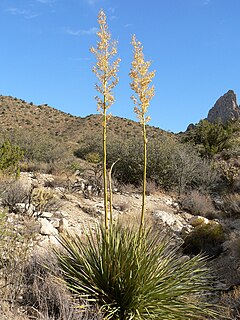
Nolina bigelovii is a flowering plant native to the Southwestern United States, California, and northwest Mexico. It grows in the driest desert areas and at elevations up to 1,500 metres (4,900 ft).
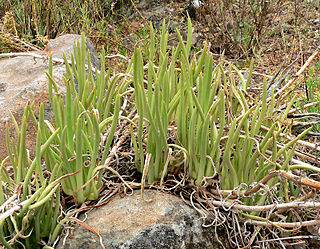
Dudleya edulis is a succulent plant known by the common name fingertips.

Chorizanthe fimbriata, the fringed spineflower, is an annual plant in the family Polygonaceae, the buckwheats. It is a member of the genus Chorizanthe, the spineflowers, and is native to southern California and northern Baja California.

Arctostaphylos pallida, commonly known as Pallid Manzanita, Oakland Hills Manzanita, and Alameda Manzanita, is an upright Manzanita shrub from the Ericaceae, or heath family. It is endemic to the eastern San Francisco Bay Area of Northern California.
Arctostaphylos luciana is a species of manzanita known by the common name Santa Lucia manzanita, is endemic to California. .

Artemisia palmeri is a rare species of sagebrush known by the common names San Diego sagewort and Palmer sagewort.

Astragalus brauntonii is a rare species of milkvetch known by the common name Braunton's milkvetch. It is endemic to California, where it is known from fewer than 20 extant occurrences in the hills and mountains surrounding the Los Angeles Basin in Southern California. This is a federally listed endangered species in the United States.
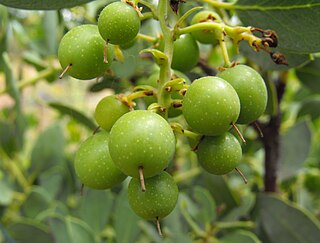
Arctostaphylos rainbowensis is a species of manzanita known by the common name Rainbow manzanita. It is endemic to California, where it is known only from northern San Diego and southern Riverside Counties in the Peninsular Ranges.

Orobanche californica, known by the common name California broomrape, is a species of broomrape. It is a parasitic plant growing attached to the roots of other plants, usually members of the Asteraceae.
Platanthera cooperi is an uncommon species of orchid known by the common names Cooper's rein orchid and chaparral rein orchid.

Plagiobothrys collinus is a species of flowering plant in the borage family known by the common name Cooper's popcornflower.
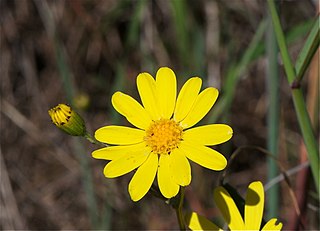
Senecio californicus is a species of flowering plant in the aster family known by the common name California ragwort.
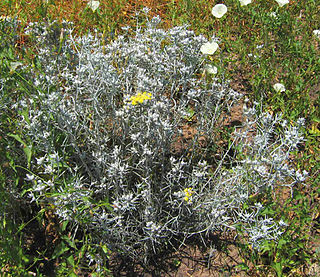
Tetradymia comosa is a species of flowering plant in the aster family, known by the common name hairy horsebrush.

Ziziphus parryi is a species of flowering plant in the buckthorn family known by the common name Parry's jujube.
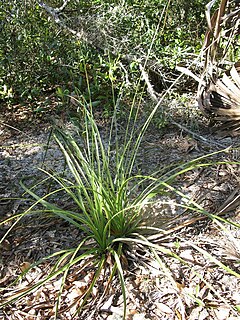
Nolina brittoniana is a rare species of flowering plant in the asparagus family known by the common name Britton's beargrass. It is endemic to Florida, where there are 72 known populations, only a few of which are large enough to be considered viable. It is federally listed as an endangered species of the United States.

Nolina microcarpa is a species of flowering plant in the asparagus family known by the common names sacahuista and palmilla. Like other species of Nolina, it may be called beargrass. It is native to northern Mexico and the southwestern United States in Arizona and New Mexico. It does occur in the southwestern corner of Utah, where it has a limited distribution on Navajo Sandstone, but reports of it occurring in Texas may be in error.



















